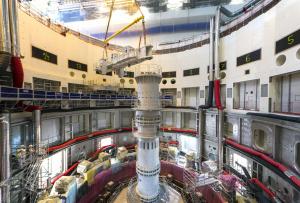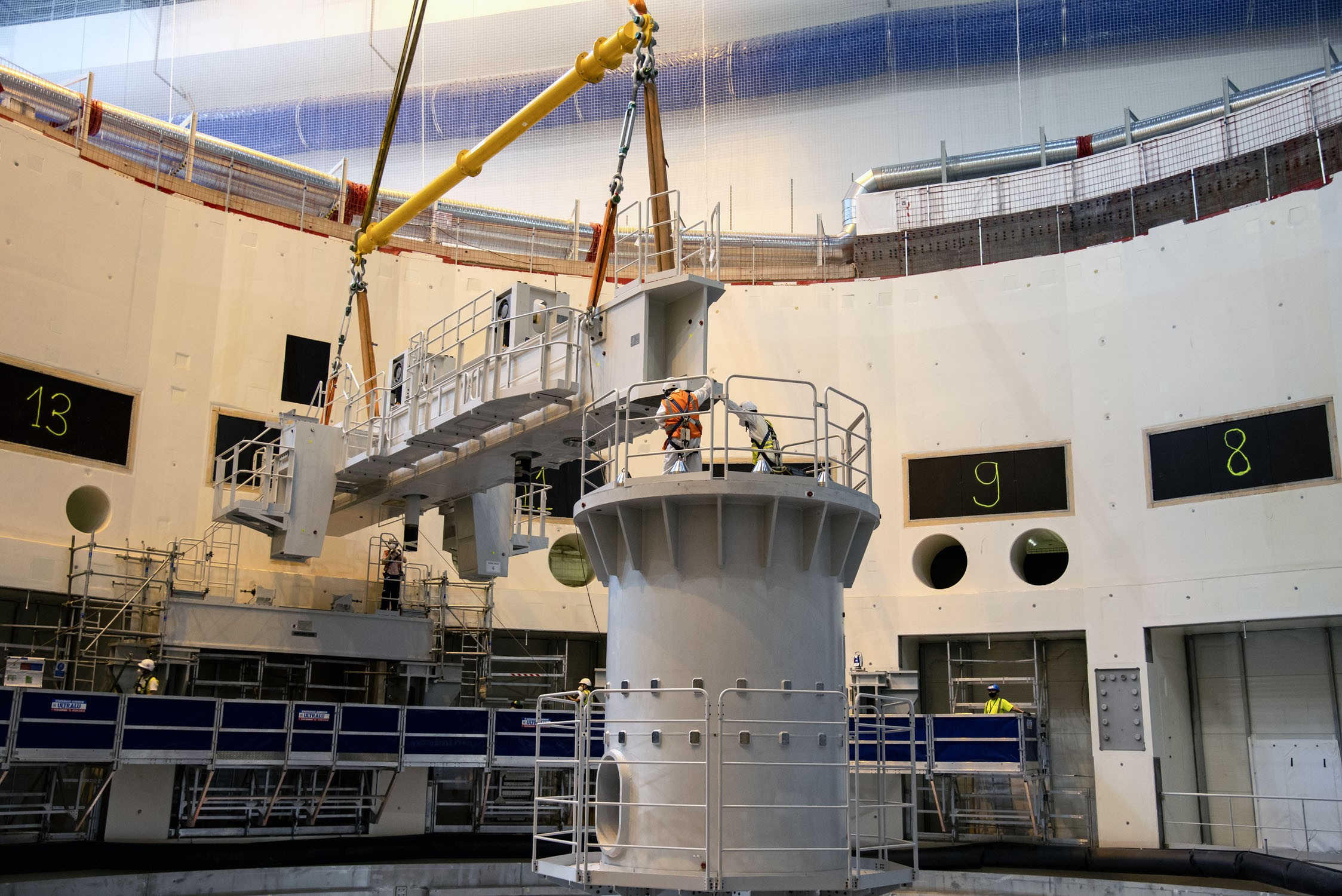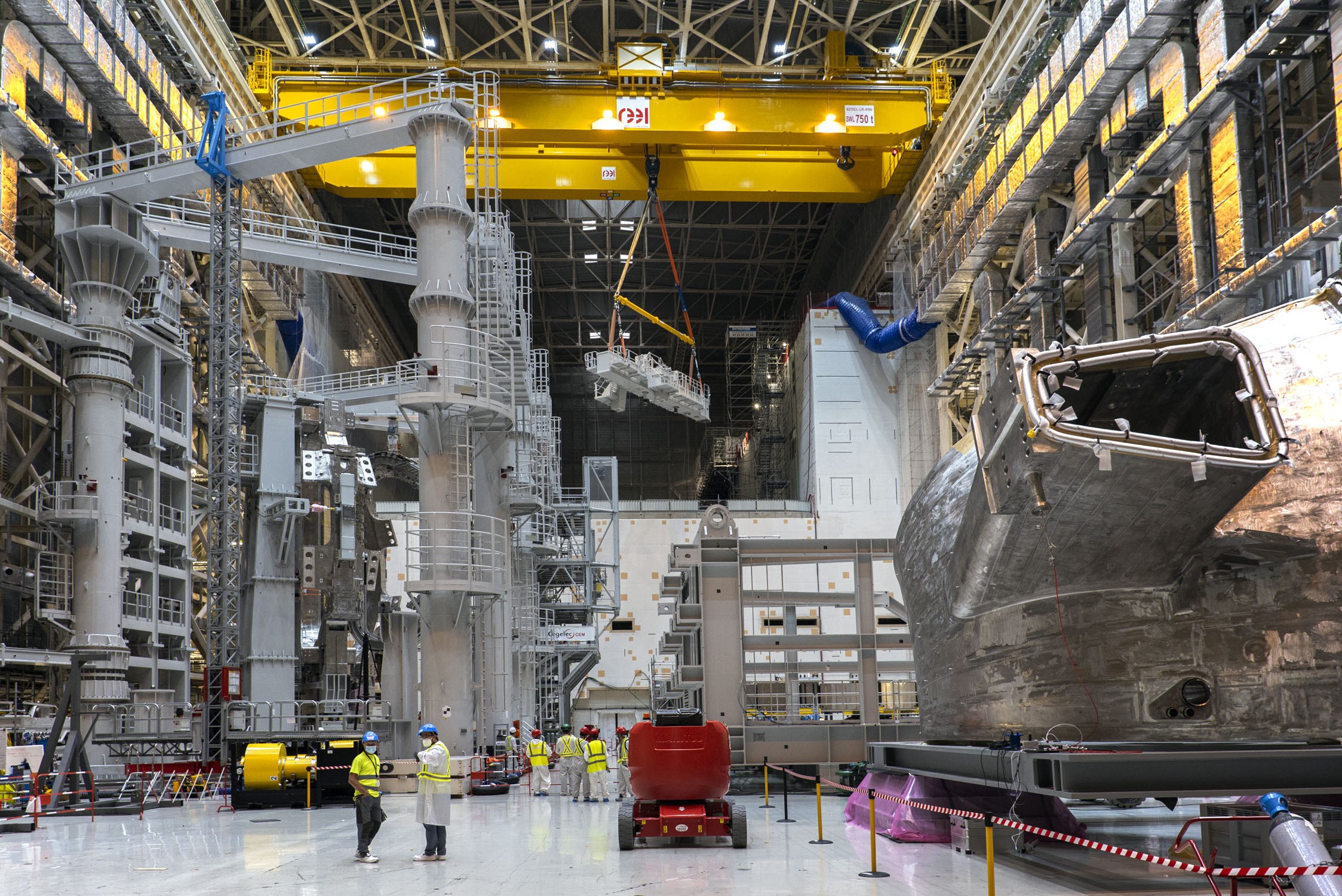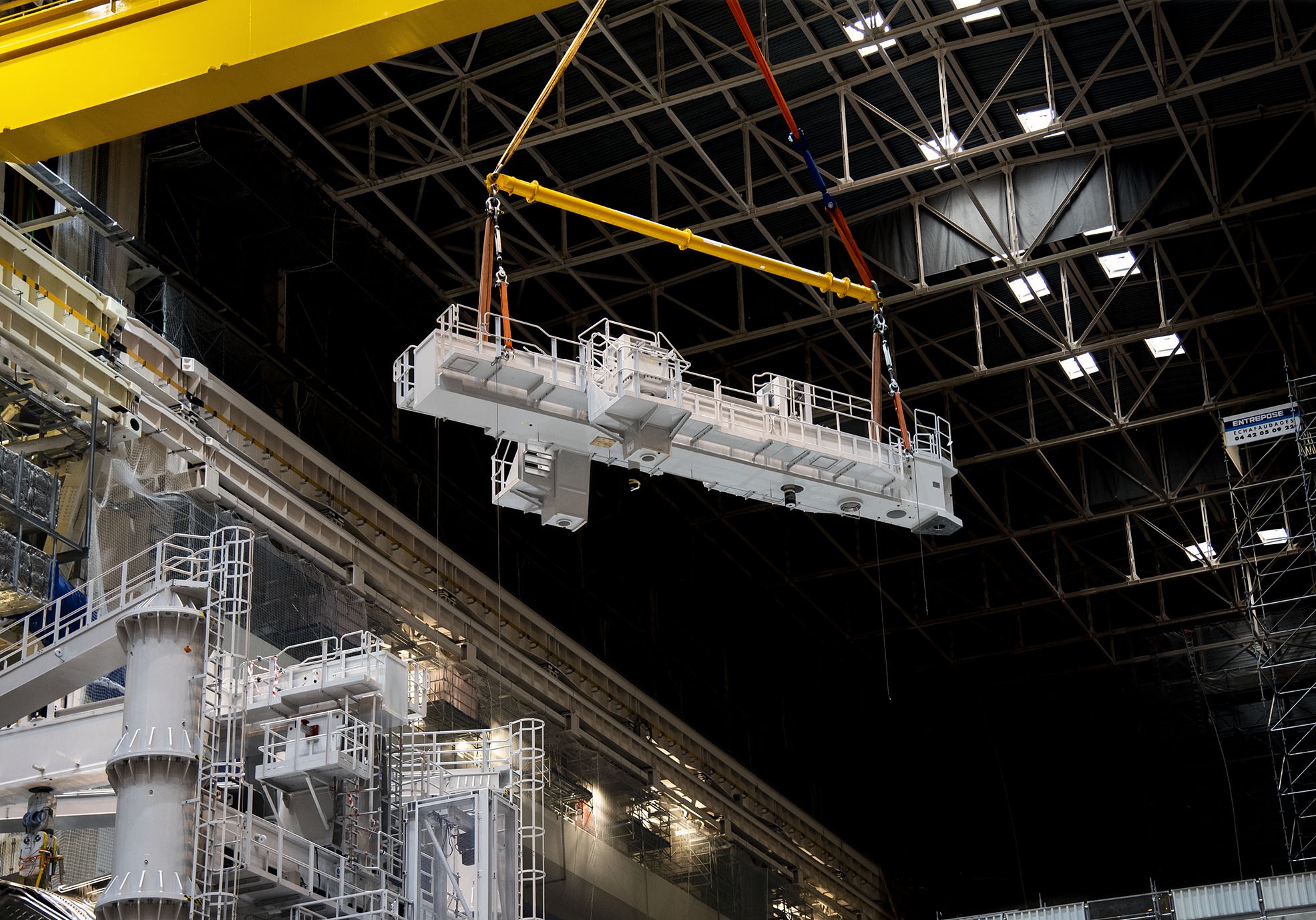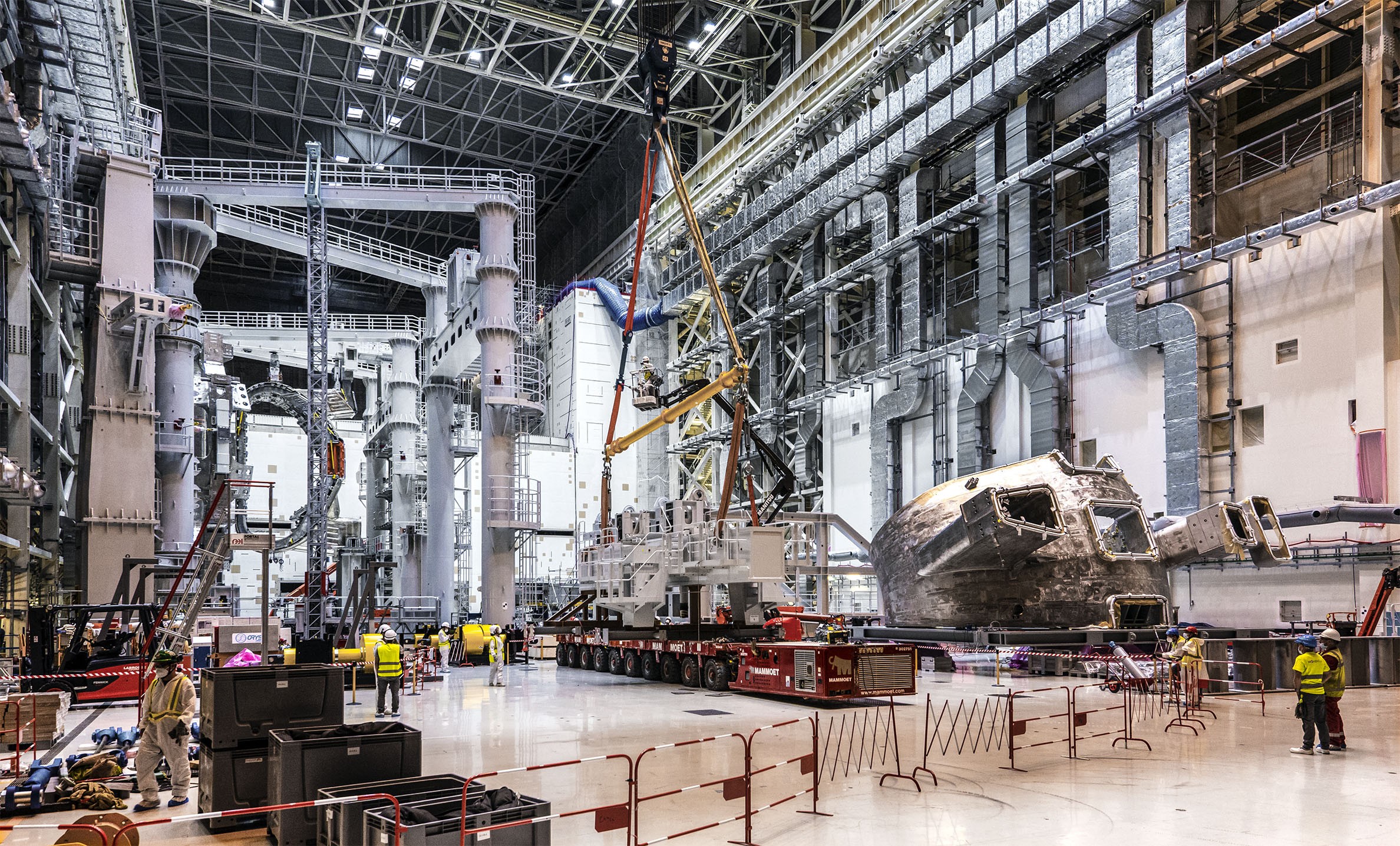Radial beam fits just right
However once hanging in the air and slowly moving along the entire length of the assembly theatre, its shape and pace were strongly evocative of slim spaceship—the bow turned toward its destination, an upper deck gangway, and openings in its hull like rocket exhausts.
And when the spaceship docked on top of the recently installed central column, it was as if a long journey through space had come to an end. One almost expected alien creatures to come out of the ship ...
Having verified with metrology that the central column and radial beam support were properly aligned, operators were reassured. "Considering the length of the beam, an offset of just a few millimetres on the central column would have resulted in centimetres of misalignment on the support."
The docking and fitting of the beam, and the final bolting to the top of the column, all fell within the required millimetre tolerances.
Final measurements did reveal an unexpected "slope" in the radial beam itself. "Because we did this test early, we have ample time to investigate whether this slope is acceptable or if we need to perform shimming to compensate for it prior to the installation of the first sub-assembly."



